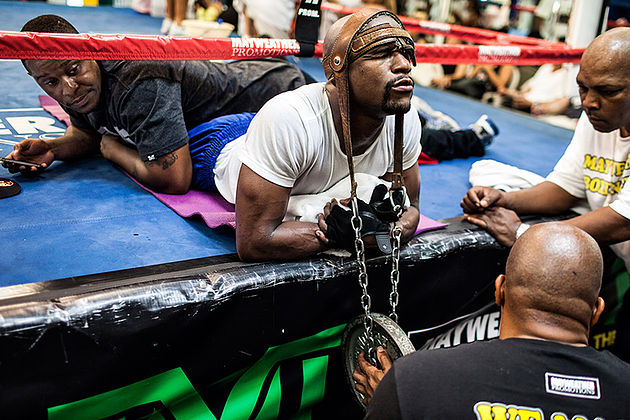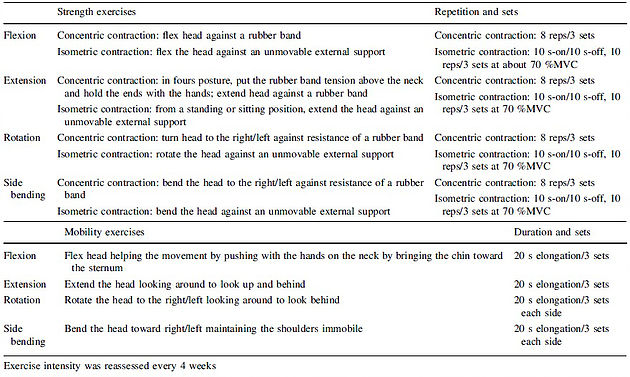Neck training. One of the forgotten areas of the body when it comes to strength training for the collision sport athlete and the general fitness enthusiast. With players that participate in codes such as Rugby, American football, and other collision sports becoming heavier and faster, the most frequent incidences of injury happen at the neck level [1]. At the end of a rugby match, a temporary reduction in cervical spine (neck area) mobility and neck muscle soreness have been frequently reported ([2] as cited in [1]). Direct neck training can potentially reduce “the deceleration of the neck into the end-range positions that cause damage to soft neck tissues” [1]. Not only does this hold importance to the collision sport athlete, but also to the general person where a strong neck would one day save your life in the event of a car crash. A new study by Maconi et al. [1] set out to investigate the efficacy of a 12 week neck muscle training program on perceived soreness in rugby players.

Do as Money Mayweather does
Who Were The Subjects?
23 amateur rugby players were randomly allocated into 2 groups. Neck muscle training (NT) and control. All players were involved in 3 rugby training sessions of 1.5h and a match (about 1.5h).
What Was Tested?
Perceived soreness of the neck muscles were assessed before, after and 24 hours following the rugby matches. Soreness was selected on a scale from 0 (no pain) to 10 (maximum soreness). Furthermore, body composition, neck range of motion (ROM), neck maximum voluntary contraction (MVC) and EMG were assessed pre and post 12 week intervention. Neck training was performed 3x per week as per the table below.
What Were The Outcomes?
Perceived neck soreness significantly decreased from week 4 onwards before and after rugby matches in the NT group compared to Ctrl. Furthermore, neck soreness 24 hours post match significantly decreased in NT compared to Ctrl from week 3 onwards. Neck ROM increased significantly in the NT group in all movements except rotations. Neck MVC increased significantly in NT as well as higher EMGs.

The intervention performed 3x/week
So How Does This Affect Your Training?
If you play a collision sport or a martial art, neck training is essential to preventing neck strains and soreness. This paper shows just 12 weeks of 3x/week neck training can improve neck strength and ROM while decreasing perceived neck soreness before, after and 24 hours after rugby matches. If you are brand new to neck training, start with just flexion and extension for 2-3 sets of 20 with a very light load (~5kgs). Build your way to heavier loads slowly and eventually add lateral flexion and rotation exercises.
The Iron Neck is another great tool that allows you to train your neck in all 360 degrees of motion. If you’re after a full neck training routine, you can find it in this Ultimate Neck Training Guide.
If you are not a collision sport or martial arts athlete, neck training still has a place in your training as it may one day save your life. And who wants to have a pencil neck?
